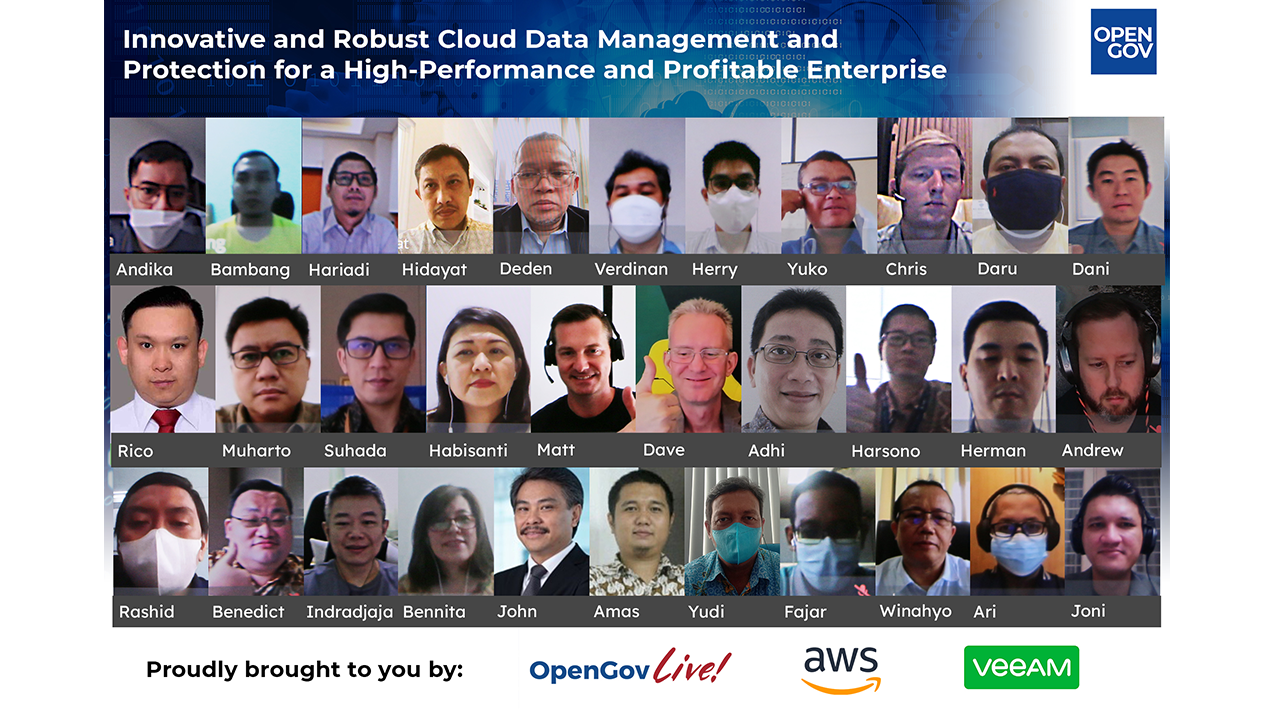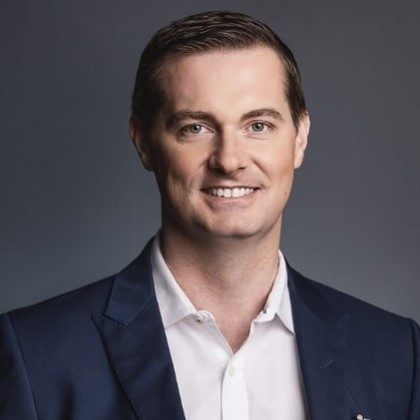
Data is increasingly at the core of any business or organisation and is fuelling new digital transformation initiatives. As data becomes more distributed, dynamic and diverse, its availability has never been more essential for effective and holistic data management and protection strategy. The importance of data availability and accessibility anytime and anywhere is even more pronounced in the current crisis. This is especially true for organisations engaged in providing mission-critical, customer-centric services.
Enterprises are facing new demands from their customers in these unprecedented times. Legacy backup cannot meet these requirements and cannot deliver the availability that is needed to keep the operations running. Accurate data protection and recovery are essential for successful mission-critical applications. Efficient access to data is essential and is necessary to improve organisational productivity.
Whether it is a natural disaster or a cyberattack, organisations need the resilience to bounce back quickly. So, what can organisations do now to prepare for a worst-case scenario? What if a backup fails to restore? What if the planned disaster recovery does not turn out to be what was expected? Against this backdrop, cloud is the inescapable future. Enterprise IT environments are no longer solely based on physical servers and workloads. Many projects have migrated to cloud platforms where security and control of data are paramount.
Indonesia is actively embracing the adoption of cloud-based technology, which is an essential tool to deal with the vast amounts of data and to build innovative products, offerings, and customer-centric services.
With the absolute necessity of cloud, multiple variants of cloud environment – such as public cloud, private cloud and hybrid cloud – have emerged to manage vast streams of data. While traditional on-premises data storage remains, the use of cloud and cloud-based services will keep organisations ahead of the game.
At a time when innovation is racing ahead, enterprises need the speed and agility to achieve cost efficiency, business resilience, exceptional customer experiences and run operations for decades to come. Security and governance are of paramount importance. In the current volatile environment, the success of any organisation is dependent on the strength of its IT infrastructure. Data protection, data mobility, data portability and data agility are the key considerations while ensuring its availability across any application or cloud infrastructure.
This Virtual Breakfast Insight held on 18 November 2021 aimed at imparting knowledge on effective and efficient data management and how to ensure data availability, accessibility, and protection across any cloud environment and on-prem.
The session served as a great peer-to-peer learning platform to gain insights and practical solutions to go beyond just managing data, but to make it smarter and more self-governing while ensuring its availability, portability and recovery across any application or infrastructure.
Embracing a new culture and embracing the inevitable challenges of data protection and recovery

Mohit Sagar, Group Managing Director and Editor-in-Chief, OpenGov Asia, kicked off the session with his opening address.
The pandemic heralded significant changes in culture and perspective. The world will not the same again – there is a line that has been drawn: pre-pandemic and post-pandemic. This has tremendous implications on the way businesses – and indeed the world – run.
Strategies deployed in late 2020 and early 2021 were, for the most part, ‘band-aid technologies” that helped to make sure there was continuity, says Mohit. Over time, organisations have learned lessons and tweaked their strategies, gradually gaining more control.
With remote work increasingly being the norm, providing secure access to a distributed workforce is essential if organisations are to make work from home a reality. They need to embrace the challenges of this new model while ensuring that the copious amount of data stored on the cloud is highly secure.
From a supplier or service point of view, it is essential to genuinely understand customers’ needs and provide suitable solutions without violating privacy rights.
The fact is, data can reside on a plethora of platforms – on-premises, the cloud, a hybrid option or even within containers. But Mohit asks, “Do organisations actually know where the data is and the criticality of the data?
At this critical juncture, organisations need to take a closer look to understand data architecture, know where data is stored and what the vulnerabilities could be. For Mohit “protection is an investment” because the odds are that every organisation will face a cyber attack at some point.
“You will get hit, it is going to happen,” he asserts. ”The question is, what is your recovery strategy and how are you managing your data?”
Where there is business growth, there will be threats. With a wider cyber surface and more access points, exposure and risks are magnified.
Closing his address, he strongly recommends delegates seek out partnerships and work with technology experts to build the infrastructures that will allow their organisations to thrive. It ultimately is in an organisations’ interest to let the experts do what they do best – this not only allows the best systems and infrastructure to be put in place but also frees up the organisation’s staff to concentrate on the business and focus on driving growth.
Protecting and securing data in a cloud-first future

Dave Russell, Vice President, Enterprise Strategy, Office of the CTO, Veeam, spoke next on strategies to manage cloud data and protection.
In the last 12 months, Veeam has done four out of the six largest data protection and recovery surveys. Based on Veeam’s studies, it is obvious that hosting data on virtual machines with hyper-scale capabilities or regional service providers will accelerate. The trends are incredibly linear – what people thought they would do, they did, says Dave.
When surveyed about the reasons for protecting M365, the number one reason is the accidental deletion of data, followed closely by preparation against cybersecurity attacks.
“We are likely to be hit by cyberattacks,” he concedes. “Knowing that, we need to prepare for adverse cyber events.”
In this context, he points out that containers are being deployed and that it is something that organisations will need to think about. Containers may not feel like an open system, but the truth is that most organisations are already using containers.
According to the Veeam survey, there is a disparity between the IaaS admins and the SaaS/PaaS ones. The admin personnel are not always aware of the production capability even though organisations are well ahead in the use of containers.
“Cyber threats are not going away,” Dave firmly states.
According to him, the industry practices the mantra of having three or more different copies on two media, one of which is off-site. One of the copies should be offline, air-gapped or immutable and have zero errors after automated backup testing and recovery.

There are several interesting observations about server platforms. A current trend that is on the rise is to reduce physical servers within the data centre. In fact, surveys indicate that plans to reduce physical servers are running ahead of schedule, meeting the reduction goals a year early.
Secondly, while projected to be flat or the same, Virtual Machines on-premise have declined. There are virtual servers within the data centres.
The third trend is that of cloud-hosted Virtual Machines. While it was predicted to increase from 32% to 41% over 2 years, actual usage is already at 47% currently and projected to be 52% (a 11% gain over and above the gain realised in the last year).
An area of increasing concern is ransomware, against which protection is of vital importance – as can be seen from the numerous high-profile cases in recent times. Veeam’s strategy is to protect, manage and unleash so that users can leverage their data through data portability, cloud mobility and instant recovery. By ensuring data availability and agility, business acceleration can take place.
From his experience, he concludes that utilising Veeam offers a better data experience that, in turn, improves the customer experience. Overall, it enables organisations to deliver new customer and partner products and services while retaining and upskilling staff and optimising costs.
Protecting data and extracting maximum value from your data

Matt Taylor, Head of Partner Success Solution Architecture, Amazon Web Services, Asia-Pacific, and Japan, elaborated on protecting data and extracting the most value from Amazon Web Service (AWS) Storage.
AWS has been helping enterprises (governments and businesses) increase agility, accelerate innovation, drive new revenue streams, strengthen security and reduce costs for 13 years. With AWS, customers are building backup and restore capabilities, archival and compliance, home directories, data lakes, modern apps and business-critical applications.
In the current model, organisations likely have a server that they need to backup via a storage array and a backup appliance. Thereafter, the data gets sent to an offsite tape vault. However, this model does not scale very well – organisations will need to estimate how much storage space is needed and purchase the capacity ahead of time.
For Matt, they are complicated to maintain and they have inflexible recovery options making it difficult to recoup. Additionally, the system leaves the data siloed and difficult to access or derive value from.
With an existing backup solution such as Veeam, data gets moved into storage and into a Tape Gateway which will send the data to Amazon S3 – which is available, durable and scalable. With a system like this, organisations no longer need to maintain the tape or move that data to a tape facility.
Matt explained that AWS and Veeam are reliable when it comes to disaster recovery. If organisations backup the data over Amazon S3 using Veeam, data can be rehydrated using EC2 Instance in the cloud. Once on-premises infrastructure returns organisations can also stay in the cloud – it would also be a great way to migrate the data to cloud.
“Customers want more value from their data,” Matt asserts. “Because the data is growing exponentially from new sources, increasingly diverse data formats, used by many people within the organisations and analysed by many applications.”
Many organisations have traditional data warehousing approaches that do not scale well. While most businesses claim to have a data warehouse, what is typically observed is a data silo with existing systems (OLTP, ARPs, CRMs etc.) and they run analytics and business intelligence. They may have another data silo by another team in another part of the business taking data from various sources, Matt concedes. But the fact is, in such a scenario, organisations do not have a full view of data about their customers.
For Matt, this is where a data lake comes into the picture. Backing up data with Veeam over S3 into a data lake allows organisations to collect, centralise and cleanse their data so that they can run full data analytics across the whole organisation and extract data. That data can also be used to train machine learning models by automating tasks.
Amazon has been doing this for over 20 years. Through recommendation engines and personalised services, they can sell 4000 products per minute; robotics in the fulfilment centres and logistics has allowed them to ship 1.6 million packages every day.
According to a study, if a typical Fortune 100 company made more than 10% of their data more accessible, the company would see a 65 million increase in net income, 415% RoI and 48% reduction in the total cost of operations.
In summary, Matt shares three core business outcomes that AWS can deliver:
- Improved operational efficiency: Increase agility, run the business more efficiently and provide a better experience for customers by moving data to the cloud
- Make more informed decisions: Inform business decision making with more meaningful insights by bringing together the full picture of data across the organisation.
- Accelerate innovation: Unlocks opportunities that were either too difficult or impossible to do before by automating processes with AI and machine learning.
Matt concludes by stating that AWS improves operations, marketing optimisation, customer experience and application development – all of which are based on the experiences of Amazon’s own use cases that have accelerated the growth of their e-commerce platform.
Interactive Discussions
After the informative presentations, delegates participated in interactive discussions facilitated by polling questions. This activity is designed to provide live-audience interaction, promote engagement, hear real-life experiences, and facilitate discussions that impart professional learning and development for participants.
In the first poll, delegates were asked about their organisation’s expectation on recovery time and recovery points, should there be a cyberattack, disruption, corruption or disaster. An overwhelming number of the delegates (68%) indicated that they want to get back in less than 1 hour without any loss of transaction or data, while the rest could accept waiting for up to 4 hours with data losses and downtime (32%).
Dave remarked that the number of applications required to keep business alive is tremendous; in fact, applications that have become mission-critical have tripled or even quadrupled. Today, if email were not available, people would lose their minds – something that was unthinkable 15 years ago.
In that case, Matt adds, making these applications exceptionally durable and secure becomes key. With the right architecture and infrastructure, some recovery can be done almost immediately.
Andrew added that while having the technology to recover is paramount, the maturity of the business to understand what is the most critical to recovering, with the greatest impact on the business is as important.
Mohit agreed with Andrew and says that while applications have become more critical, not everything is 100% critical – there has to be prioritisation.
The next question inquired what delegates thought was the most concerning (potential) impact of downtime. Most of the delegates selected reputational damage (47%), followed by loss of customer confidence (41%) and regulatory action (12%).
“Customers have many options today,” Mohit warns delegates. “If a business is down or unavailable, customers will readily explore other options to get what they want.”
Dave concurs that with customers, reputational damage is the first concern. The perspective that organisations must have though, is that the “customer” is internal, external and partners. “You have to satisfy requests fast or suffer,” he opines.
On how confident delegates are that their organisation’s data/workload can move securely across platforms/cloud, most delegates selected fairly sure (67%). The rest of the delegates were divided between very confident (17%), not confident (11%) and uncertain (5%).
For Mohit, the move to the cloud is inevitable and believes that IT is the best investment that people can do, “It is going to be a multi-hybrid cloud strategy that you have to deploy and keep secure; you will need the right tech and the right people to do it well.”
Dave believes that an ounce of prevention is worth a pound of cure. Matt added that organisations can leverage solution architects who know how to manoeuvre to help organisations. A lot of the tech built is because Amazon needed the use case; now they know how to solve problems.
When asked about the most concerning factor for delegates when they are in a vendor lock-in situation, most delegates selected limited technology options and were unable to adopt best-of-breed available in the market (36%), portability and agility of data/workload (21%), inability/difficult to exit when technology reaches “End of Life” (22%), and commercial disadvantage during the negotiation (14%).
Matt acknowledges that organisations are worried about getting locked into propriety technology that they cannot move away from. He advises putting data into platforms where organisations can control and move data in and out as they wish.
Andrew added that things are changing so rapidly that making a three-to-five-year infrastructure decision that is locked in will not allow organisations the agility to change and may hold an organisation back in adopting new technology.
On the area of interest for delegates’ organisation and what delegates value the most, an overwhelming majority selected delivering business resiliency through highly available applications and workloads (79%), the rest of the delegates selected visibility into cross-system data and infrastructure to identify unexpected changes and potential risks (7%), ease of doing business through simplified technology consumption model (7%) and tools that can delivery automation in areas like compliance and data classification(7%).

Dave shared that staff in Veeam’s support centres are constantly managing situations where organisations are hit by cyber-attacks.
“It will not diminish over time,” Dave says. “It is not a question of ‘if’ but ’when’. Organisations must pre-empt and prepare for cyber threats.”
On being asked what they thought will be their organisation’s biggest challenge when faced with a ransomware attack, most delegates were concerned about their customers’ confidence in the company (46%). The rest of the delegates were split between the challenges of backup copy being compromised (36%) and the long time required to recover data from backup (18%).
Mohit feels that the loss of customers’ confidence is a result of the backup copy being compromised and the long time taken to recover data. Customer confidence is the driver, and data protection and recovery strategies are vital.
Conclusion
In closing, Habisanti, Country Manager, Veeam Indonesia thanked all the delegates for their participation and insights on the topic. She reiterated the importance of data protection and recovery for operations as organisations embrace digital transformation. The needs of the time require new strategies, models and technological adoption – it is part of the fabric of current reality.
Before signing off, Habisanti encouraged delegates to continue to have conversations about the ever-evolving technology landscape. She invited the delegates to reach out to her and the team if they had any queries or wanted to explore ways to collaborate.
















